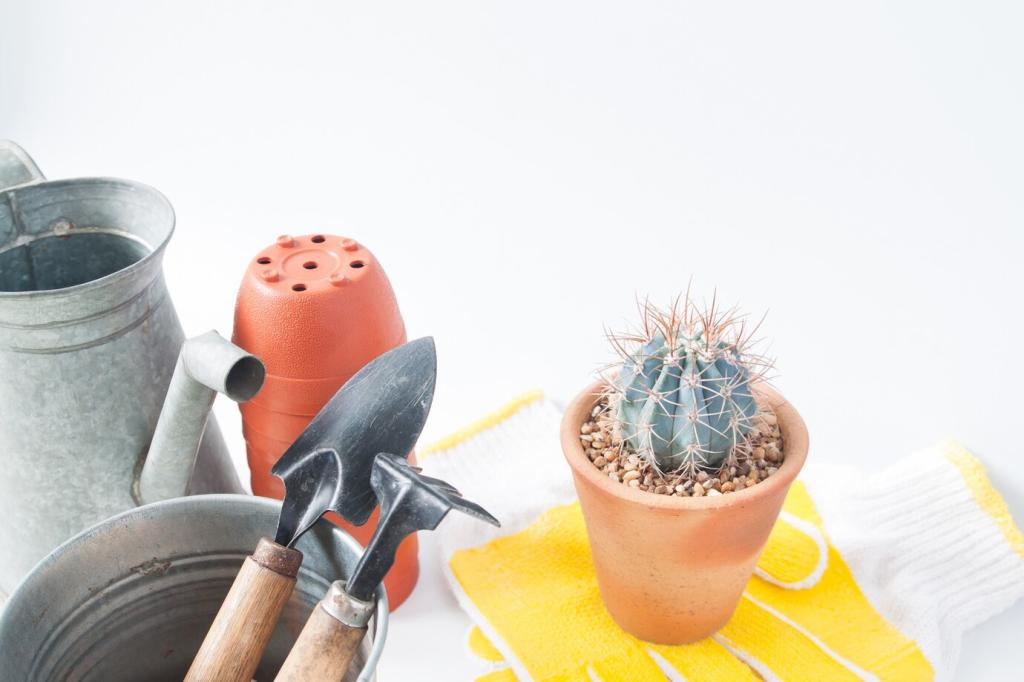Smart Irrigation Systems for Modern Gardens: Water Less, Grow More
Chosen theme: Smart Irrigation Systems for Modern Gardens. Welcome to a greener, smarter way to water, where sensors, weather data, and intuitive controls give your plants exactly what they need. Dive in for practical guides, real stories, and ideas you can act on today. If this resonates, subscribe, share your questions, and tell us how your garden is evolving.
How Smart Irrigation Systems Work

Soil moisture probes, rain sensors, and flow meters quietly measure what your plants actually experience. Instead of watering by the calendar, the system responds to the soil’s current state, preventing overwatering, minimizing runoff, and giving roots just enough to thrive without stress.
Many gardeners report 20 to 50 percent water savings after installing smart controllers and drip conversions. Usage dashboards show week-by-week trends, making conservation tangible. Share your baseline and results with us; your story could motivate a neighbor to try smarter watering this season.


Zone by Plant Needs
Group plants with similar thirst and sun exposure together. Herbs and succulents love lean watering, while vegetables demand more frequent cycles. Splitting them into separate zones lets the controller tune schedules precisely, keeping basil lush without drowning a drought-tolerant bed nearby.

Microclimate Mapping
Notice hot walls, windy corners, and shaded pockets that change moisture retention. A south-facing fence might heat up soil dramatically, while mature trees cast cooling shade. Mapping these contrasts helps the system allocate time wisely, avoiding overwatering cool zones and underfeeding sunbaked beds.

Retrofit or Rebuild
You can retrofit existing valves with a smart controller and convert spray heads to drip for targeted delivery. New builds offer a blank canvas for ideal pipe routing and emitter spacing. In both cases, a quick sketch now prevents future leaks, dry patches, and tangled maintenance headaches.

Choosing the Right System and Components
Look for weather integration, zone-level customization, seasonal adjustments, and clear reporting. Manual overrides and skip-rain intelligence are must-haves. If you travel often, remote alerts are invaluable. Bonus points for easy onboarding, sensible defaults, and quick access to runtime history and leak detection.
Installation, Calibration, and Maintenance
A Weekend Installation Plan
Label valves, photograph wiring, and connect the controller methodically. Run each zone to verify coverage, then update zone names in the app. Finish by enabling weather data and setting plant types. Post your first impressions below; we love troubleshooting together during those early test cycles.
Calibrating to Soil and Slope
Clay soils need shorter pulses with longer rests to absorb water. Sandy soils want slightly longer cycles. On slopes, cycle-and-soak prevents runoff and encourages infiltration. Adjust in small increments, observe for a week, then tweak again until leaves, soil, and sensor data agree.
Maintenance That Prevents Headaches
Clean filters, flush lines seasonally, and straighten emitters that drift. Replace cracked seals and check for slow leaks with flow alerts. Winterize in cold climates by blowing out lines. Share your maintenance checklist, and we will publish a community-tested calendar to keep systems humming.
Stories from Smart Gardens Like Yours
Maya converted a windy rooftop from struggling pots to a vibrant herb terrace by switching to drip with moisture sensors. Her water bill fell by a third, thyme actually thrived, and morning checks became joyful. She now hosts sunset tea tastings; her mint never looked happier.
Stories from Smart Gardens Like Yours
In a shared garden, coordination was chaos until a smart controller with app access unified schedules. Each bed became a zone, runtimes were transparent, and conflicts vanished. Harvests improved, volunteers felt empowered, and the group started tracking savings to fund more pollinator-friendly plantings.


